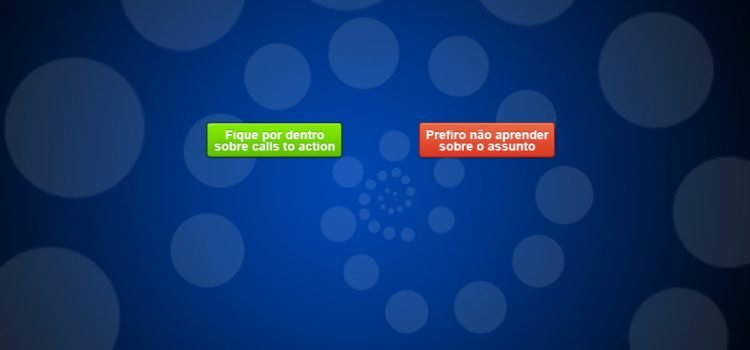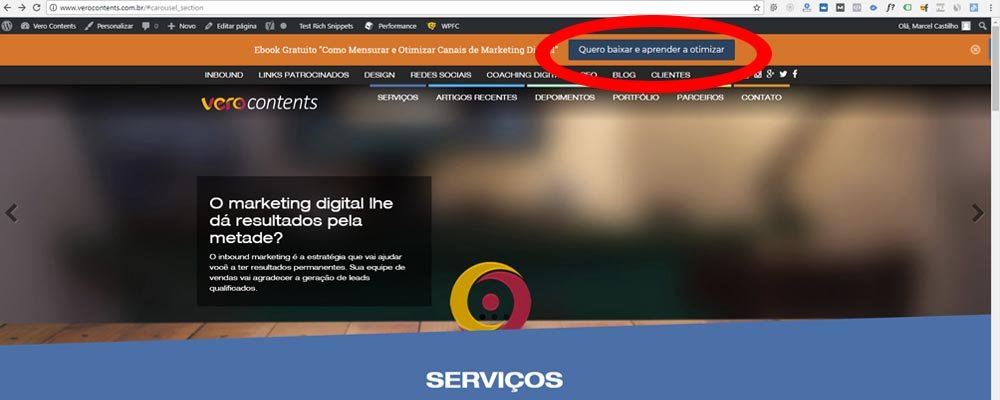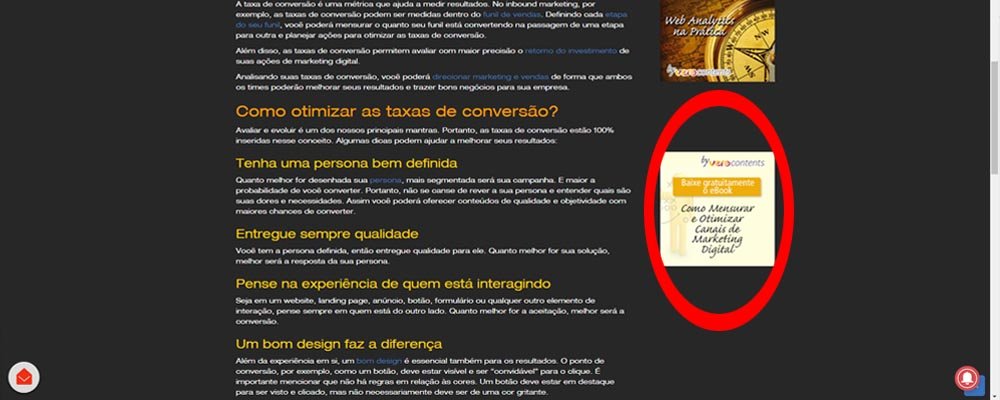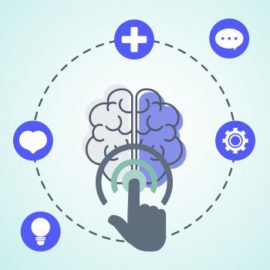
|
Getting your Trinity Audio player ready... |
Call to action (or CTA), translated into Portuguese, literally, means “call to action”. This is a very important concept in the digital world (I would say essential) and very easy to understand. To do this, we just need to put ourselves in the position of a visitor to a website or e-commerce.
Let's say you are browsing a website and in the corner there is a window with a form. It says “Sign up and receive our news”. Or, you are on an e-commerce website and next to the product you are viewing, there is a “Buy” button. Both are calls to action.
In fact, we can say that a call to action appears everywhere, to be honest. In the example of websites or e-commerce, it could be a request to complete registration, make a purchase, download an e-book, request a quote or speak to an expert... the possibilities are countless.
The call to action is nothing more than the call to carry out these actions. It can be in text with a link or a button and will take the user to the next step within a pre-determined strategy. See in this article how to put together the best call to action for each action you want and what are the best practices surrounding its use.
How to create a call to action
In any action we carry out on the web, the objective is to get the user to carry out a specific action. By the way, we are the ones who determine what the user should do, but always thinking about the type of visitors to the site. The first step, therefore, is to know who the persona and how it relates to you.
This relationship will determine the type of call you will have to create to get their attention. Furthermore, the level of knowledge that your persona has will also affect not only your message, but also the content you will offer to get the user to take the desired action.
The second step is the sales funnel. You must understand where the visitor is in relation to the purchase stage. After all, you won't place a buy button for a visitor who is on early stage of the funnel, as he is not yet able to carry out this action. In that case, your conversion rate will be extremely low.
The call, therefore, must “speak” to this visitor according to where he is. Some examples:
- Click here to receive our newsletter – top of the funnel;
- Make a free diagnosis of your company – middle or bottom of the funnel;
- Learn more about digital marketing with our free e-book “Digital Marketing – step by step for beginners” – top of funnel
- Speak to an expert! – bottom of the funnel – and so on!
In addition to the persona and the journey, you should also think about the context of your CTA. There is no point, for example, in placing a CTA for basic material in an extremely complicated blog post.
Best practices
We've put together some tips for you to get the best results with your CTAs. Check out!
Choose the objective of your call to action
This is the first point. Plan, first of all, what the desired action will be.
Do you want to generate signups for your newsletter? Want to generate traffic to other blog articles or offer a e-book? Finally, there are several objectives for your CTA, which can also be “get more followers on a certain social network”, “watch a video”, “respond to a survey”, “convert a lead“, “participate in an event or webinar”…
This will impact other items that we will talk about later, such as format, location, colors and message.
Choose the ideal format
There are so many formats that we even get confused with their use... choosing the format is very important.
The button is the most common format. It should always be highlighted, but without exaggeration. It should be visible on the user's first contact with the page, if possible. See the example below, a CTA at the top of the page on the Vero Contents website. The button is located at the first point of the navigation and is in contrast to the background, that is, clearly visible.
You can also work with side banners, also in contrast with the background you are using.
Without exaggeration, the banner must be visible and, without attacking the visitor, draw attention to the action, as it should be.
Don't forget to carry out A/B testing in images, texts, colors and even links, if possible. This will help you achieve better results.
Using links in texts is also a really cool format, especially in blogs and emails:
Choose where to use the CTA
A call to action can be used anywhere, really. Within a website, it can be both on the Home page and on the website pages and blog posts. It is important that it is always visible, without disturbing navigation. But remember that the user may not reach the end of the page. Therefore, try to place it in places where visitors can find it without having to reach the end.
Send a e-mail marketing Without having a call to action, it’s a bore. Do you have the ability to speak directly to your potential customer and not direct your message towards any type of action? Therefore, use CTAs in your messages.
To the social media should also contain your CTAs, especially if you work with inbound marketing. Nowadays, they are no longer just traffic generators. Social selling is very important, as is lead generation. Think carefully about using calls to action, including from one network to another.
You can also use CTAs in videos, no matter where they are being shown, as well as in ads (especially in remarketing).
Use colors well
Colors play an important role when we talk about calls to action, especially when using buttons. It is important that it stands out and is easily visible, but without disturbing the website design or the part in which it is being used. There is a legend that says that red should be avoided, as it is associated with errors and emergency warnings, but it can very well be used in CTAs, especially in purchase buttons.
Work on desirable CTAs
It is much better for you to be impacted by a CTA that says “Join our VIP list” than “Sign up and receive our news”. Or “Do like the best and receive fresh content” in relation to “Sign up”… there are other ways of saying the same thing, but in a more charming and eye-catching way.
Use techniques Copywriting and increase the success of your calls to action.
As we can see, developing a good call to action will depend on several factors, ranging from the context to the situation. Using text links, for example, will be directly linked to the content. And so on… The important thing is that all items are connected to each other. And that you plan well where to use it and how to use it.
How about learning everything about Web Analytics and becoming an expert at analyzing and improving digital marketing actions? Just pull our e-book.

Marcel Castilho is a specialist in digital marketing, neuromarketing, neuroscience, mindfulness and positive psychology. In addition to being an advertiser, he also has a Master's degree in Neurolinguistic Programming. He is the founder, owner and CEO of Vero Contentes and the offline agency VeroCom.








Comments are closed.